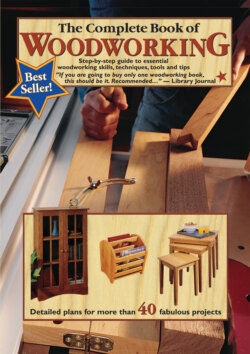Читать книгу Draw Manga - Tom Carpenter - Страница 28
Reclaimed lumber
ОглавлениеIn recent years there has been a lot of talk about reclaimed lumber. Most reclaimed lumber is salvaged from the beams and timbers of old buildings, and some is recovered from the chilly depths of the Great Lakes. Such lumber was culled from virgin forests a century or more ago, and it is generally very straight-grained and true. It is also extremely seasoned; only large swings in temperature or humidity seem to affect it. Reclaimed lumber is generally a great product, and numerous mills advertise on the internet. The price may be high, however, especially for premium cuts and grades.
Buying reclaimed lumber is by no means your only source for obtaining it. Before you toss an old piece of furniture or dispose of boards and trim from a big remodeling project, consider reusing the lumber for woodworking. Sometimes all it needs is to be stripped, sanded or run through a planer. Visually inspect any reclaimed lumber carefully or check it with a metal detector before passing it through a saw or router, to be sure there are no hidden metal fasteners present.
Don’t overlook “diamonds in the rough”: These mahogany boards, salvaged from a discarded couch and passed through a planer, will make excellent stock for a woodworking project.
MAIL-ORDER LUMBER
Lumber by mail: If you don’t have a specialty lumberyard nearby or need a more unusual species for your project, consider ordering lumber by mail. The range of species offered is usually quite broad, and the prices are competitive. Thumb through the back of most woodworking magazines and you’ll see numerous mail-order suppliers to choose from. One drawback to buying by mail is that you’ll be ordering lumber sight unseen. As a safeguard, make your first order small, so you can inspect the quality. Ask about moisture levels, too, so you can use what you order right away without needing to let it dry first.
Consider buying your lumber from a local saw mill. Here you’ll find a wide range of species in a host of dimensions. Most mills will sell stock to you at a fraction of the price a lumberyard charges.
It’s quite acceptable to rummage through the stock at a specialty yard, but make sure you rebuild the stacks as you found them. Longer, wider boards belong at the back of the rack. Don’t mix the boards from different bins. Boards in two binds may look the same at first glance, but they may be different grades. Check the board ends to see if the yard has painted different colors there—the colors represent the grades.
